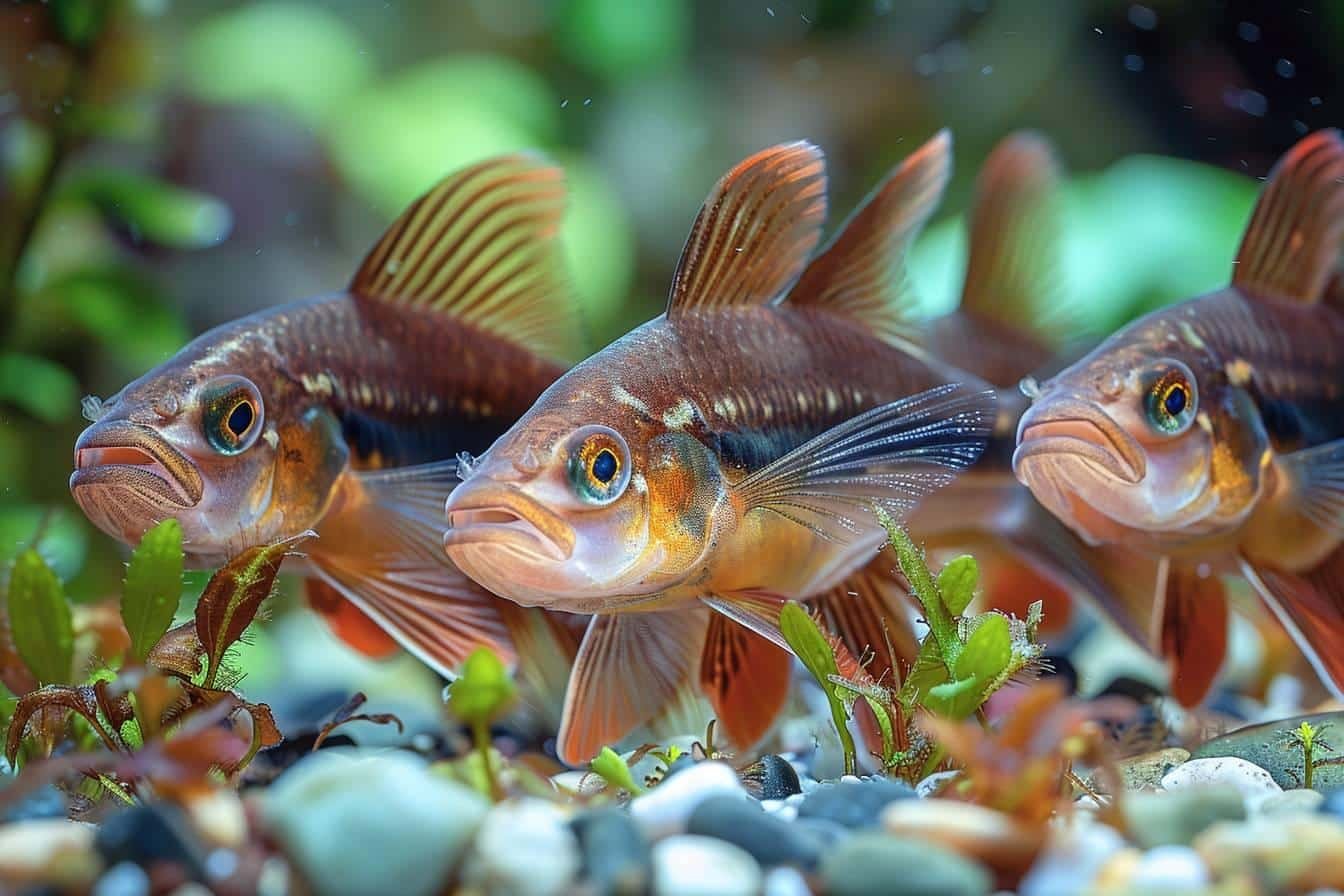The article in brief
Ancistrus reproduction is an interesting process that requires specific conditions and special attention. Here are the key points to remember:
- Optimal environment Aquarium size: minimum 200L, temperature 23-28°C, pH 6.5-7.5
- Crucial development various hiding places (coconuts, PVC tubes) for laying eggs
- Suitable food : plant-rich diet to stimulate reproduction
- Natural process courtship, 50-100 eggs laid, incubated by the male
- Population management : space planning for fast-growing fry
Ah, ancistrus! These adorable catfish are the delight of many an aquarist. As an aquarium enthusiast for over 15 years, I can tell you that their reproduction is a captivating subject. Let me guide you through the secrets of ancistrus reproduction, an adventure full of surprises!
Ideal conditions for ancistrus reproduction
Before you start breeding ancistrus, it's vital to create a suitable environment. These little fish have specific needs if they are to feel at ease and reproduce.
The perfect aquarium for your breeding stock
For reproduce ancistrus successfully, an aquarium of at least 200 litres is recommended. This gives them enough space to move around and establish their territory. The water temperature should be kept between 23 and 28°C, with an ideal pH of between 6.5 and 7.5.
Don't forget to install a good filtration system. Ancistrus are real waste factories! One day, I neglected to clean the filter and I can tell you that the water became cloudy in no time. Believe me, a good filter makes all the difference!
Landscaping that encourages reproduction
Ancistrus love hiding places. Give them hollowed-out coconuts, PVC tubes or upturned clay pots. These shelters will serve as nests for laying and protecting the eggs. I once used an old coffee cup as a hiding place, and you'll never guess: it became my ancistrus' favourite spot!
Nutrition for future parents
A diet rich in plants is essential to stimulate reproduction. Offer them seaweed, fresh vegetables (courgettes, spinach) and special pellets for ancistrus. A few days before breeding, increase the plant food ration. It's like an energy boost for these little fish!
The ancistrus reproduction process
Now that everything is in place, let's take a look at how the process works. ancistrus reproduction. It's a fascinating spectacle that I've been lucky enough to witness on many occasions.
Courtship and egg-laying
When the ancistrus are ready to breed, the male becomes more territorial. He chooses a hiding place and cleans it meticulously. The female, attracted by this behaviour, comes to inspect the nest. If she approves, she lays between 50 and 100 orange eggs.
Here is a short table summarising the egg-laying process:
| Step | Duration | Lead actor |
|---|---|---|
| Preparing the nest | 1-2 days | Male |
| Laying | A few hours | Female |
| Fertilisation | Immediate | Male |
Incubation and hatching
Once the eggs have been laid, the male takes over. He looks after the eggs himself, cleaning and ventilating them with his fins. Incubation lasts between 5 and 10 days, depending on the water temperature. It's interesting to see this papa ancistrus so dedicated!
After hatching, the fry remain in the hiding place until their yolk bladder has resorbed. It's their natural little larder!
The first steps of the fry
Once the fry start to swim freely, it is best to isolate them to increase their chances of survival. You can feed them in the same way as adults, with seaweed, finely chopped vegetables and micro-granules.
Watch out, these little ones grow up fast! At theadult, the size of the ancistrus can grow to between 10 and 20 cm. Make sure you have enough space or new aquariums to accommodate all these offspring!

Tips for successful reproduction
After years of experience, I have a few little secrets to share with you to optimise the reproduction of your ancistrus.
The ideal ratio
To encourage reproduction, aim for a ratio of one female to two or three males. It may seem unbalanced, but believe me, it works! The males compete to attract the female, which stimulates their reproductive instinct.
Stimulation through water change
A big change of water can trigger reproduction. It's like giving them a fresh bath! Renew about 30% of the aquarium water with slightly cooler water. I have often observed breeding behaviour in the days following this operation.
Managing overcrowding
Ancistrus are prolific breeders. Left unattended, they can quickly overcrowd your aquarium. Here are a few tips for managing this abundance:
- Plan in advance where to place the youngsters
- Offer or sell the fry to other enthusiasts
- Limit hiding places to reduce egg-laying opportunities
By following these tips, you should be able to reproduce your ancestors without difficulty. Don't forget that each group of ancistrus is unique. Observe them, get to know their habits, and you'll be rewarded with the wonderful spectacle of life renewing itself in your aquarium.
Remember, patience is the key. The first time I tried to reproduce ancistrus, I was so impatient that I checked the hiding places every hour! Now I know that you have to let nature take its course. Enjoy the process, it's an enriching experience that will connect you even more with your little moustachioed protégés.
External sources :
wiki aquaculture
wiki fish farming
